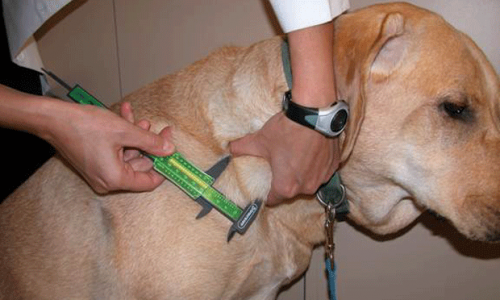Dog lymphoma or lymphosarcoma is a type of cancer that determined by the presence of malignant white blood cells, called lymphocytes, in organs such as bone marrow, liver, spleen, lymph nodes and some others. Lymphoma is one of the most common types of malignant cancer in dogs.

What are the causes of lymphoma?
Contents
Lymphoma usually develops in dogs due to a number of genetically inherited factors, therefore the history of the disease in the pedigree dogs may indicate an increased risk of developing lymphoma. Not less, there is also evidence that lymphoma may be not associated with genetic factors, but develops as a result of exposure to environmental factors such as toxins or pesticides.
Which dogs can develop lymphoma?
Any dog that has a family history of lymphoma is at increased risk of developing the disease. Nevertheless, the presence of lymphoma in the pedigree does not mean that the dog must the disease will appear.
The development of lymphoma in dogs usually begins at middle age, at about 7 years old or a little earlier in some giant breeds, then the risk of the disease increases exponentially as aging.
Some breeds are thought to be at particularly high risk. development of lymphoma, namely:
- Basset hound
- Scottish terrier
- Bulldog
- Boxers
- Bullmastiff
- Airedale
- Dachshund
- Chow chow
- German Shepherd
- Rottweiler
- Golden retriever
Types of Lymphoma in Dogs
Lymphoma in dogs is divided into five stages, which are classified depending on severity, prevalence and progression.
- The first stage of lymphoma is characterized by the defeat of only one lymph node
- The second stage is known as localized lymphadenopathy, which is characterized by an increase in some lymphatic nodes.
- The third stage refers to the general increase and mutation of all or most lymph nodes in the body.
- The fourth stage of lymphoma involves damage to the spleen and liver, and may or may not be accompanied enlarged lymph nodes in the second and third stages.
- The fifth stage is characterized by further spread. lymphoma, which affects the bone marrow, nervous system and others body organs.
What are lymph nodes?
Lymph nodes are key components of the immune system. systems that are distributed throughout the body and connected by channels, called lymphatic vessels. Lymph nodes with different densities located in the armpits, neck, abdomen, limbs and many other parts of the dog’s body.
Symptoms of lymphoma in dogs
If your dog is one of the breeds that are in risk zone, or if you know that your dog’s pedigree has cases of lymphoma, it is important to know and be aware of the possible symptoms development of lymphoma, especially if the dog is older.
Potential Symptoms of Early Stage Lymphoma are:
- Loss of appetite
- Weight loss
- Intermittent Digestive Disorders or Vomiting
- Fever
- Lethargy and depression
- Thinning or hair loss
- Increased water intake and urination
- Swollen lymph nodes, which are usually painful
Lymphoma can affect various parts of the body, which can lead to to the appearance of a variety of symptoms. If lymphoma gives metastases to lungs, this can lead to suffocation and cough, lymphoma the digestive system can lead to blood in the stool and a number of other long-term and common digestive problems.
Lymphoma can metastasize to many other organs in the body, including skin, eyes, nervous system and bone marrow, therefore localized symptoms can vary greatly from case to occasion. Contact your veterinarian as soon as possible. or a suspected case of lymphoma if you notice any initial general symptoms.
How is lymphoma diagnosed?
For the diagnosis of lymphoma in a dog, a wide a range of different methods, including:
- Biopsy
- Lymph node aspiration
- Blood analysis
- Analysis of urine
- Roentgenogram
- Ultrasound scan
- Bone marrow biopsy
Treatment and prognosis for dogs with lymphoma
Lymphoma is an aggressive and debilitating type of cancer that, to Unfortunately, it is usually fatal. Without treatment average life expectancy of dogs with lymphoma is just two months.
Treatment of lymphoma in dogs is usually palliative therapy that aims to reduce pain and other adverse side effects caused by aggressive therapy.
Chemotherapy is usually the appropriate treatment. only for viable dogs when she is able to destroy localized stage of lymphoma, or slow down the progression other stages of the disease. However, lymphoma is aggressive. cancer, which is characterized by relapses, so a complete cure lymphoma in dogs is generally not considered possible.
However, treatment with chemotherapy if your veterinarian recommends this method, can add a couple of years or even more to your dog’s life will give it a good enough and comfortable level life during this time. Timely start of treatment in provides a much higher chance of recovery and good health for some time in the future.






